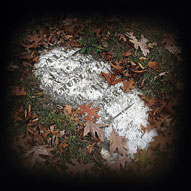
For a study in subterranean culture, look no deeper than Richard Bak, author of
Boneyards: Detroit Underground. In his explorations this week, Bak unearths the migration of bodies from Detroit to suburban cemeteries, a burial ground absorbed by an auto plant, and visits a pet graveyard. RIP, Fido.
Post 1: Day of the Dead
Posted By: Richard Bak
Posted: 11/4/2010
Overshadowed by the sugar-fueled craziness that has become Halloween is a centuries-old tradition first celebrated in Mexico and Latin America. The origins of El Día de los Muertos—Spanish for "The Day of the Dead"— date back to the ancient Mayan and Aztec cultures, where ofrendas (offerings) were made to attract and comfort the spirits of departed loved ones. The holiday originally was held in the late summer, but Spanish Conquistadors moved it to November 1 and 2, in keeping with the Catholic holidays of All Saints Day and All Souls Day.
According to tradition, the spirits of children (los angelitos) visit on the first day, with adult ghosts dropping in on the next. Waiting for them inside homes and churches are altars built by friends and family members. A variety of items are displayed: candles, flowers (especially marigolds), religious artifacts, elaborately designed paper cutouts (papel picado), sugar skulls, and a sweet bread known as pan de muerto ("bread of the dead") that is often shaped into skulls or round loaves with bones. The ofrendas are meant to be highly personalized, so photographs and favorite possessions of the deceased are the most important items displayed. St. Anne's Church, one of Detroit's oldest and loveliest churches, always displays an amazing multi-tiered collection of offerings. For many celebrants, visiting loved ones' graves with gifts is part of the ritual.
Thanks to some savvy marketing by local Hispanic community leaders, El Día de los Muertos has become an increasingly popular event in southwest Detroit, where most of the metropolitan area's Latinos live. Artistic works incorporating skulls and skeletons, more wry than morbid, are everywhere, reflecting the ancient attitude that bones are as much a symbol of rebirth as death. One of the coolest Day of the Dead characters I've seen—a skeletal bride and her groom that I dubbed "The Newly Deads"—was bought by a friend at a shop on Bagley. There are similarly colorful creatures found inside markets, restaurants, bakeries, and churches during the holiday festival.